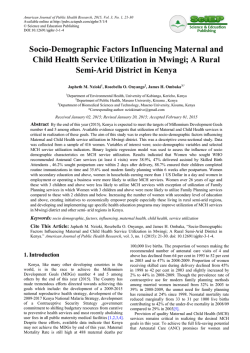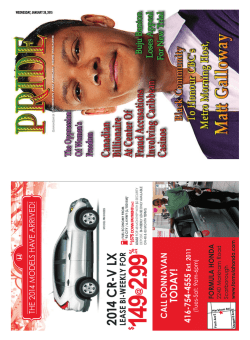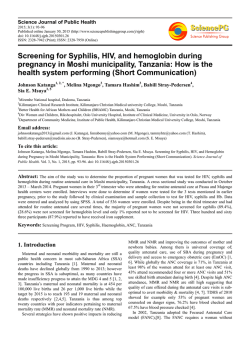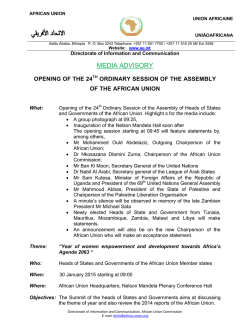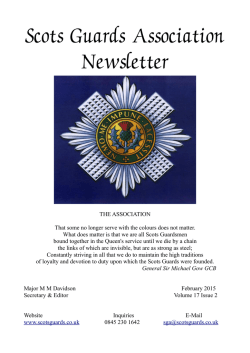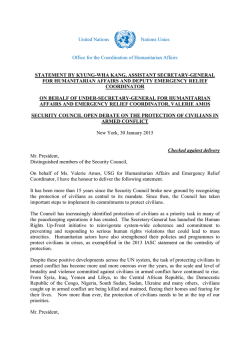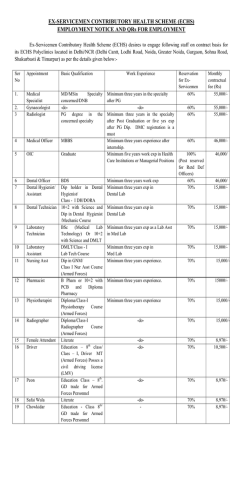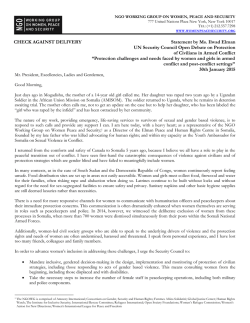
Before Mandela:
Mandela before Mandela: Chief Albert Luthuli, the Nobel Peace Prize and the turn to armed struggle in apartheid South Africa S Apartheid: Definition and Purpose S Apartheid = “Apartness” S National Party: 1948-1994 S A political device to preserve ethnic and racial identity and consolidate white supremacy and privilege in the face of emerging African nationalism “Must Bantu and European in future develop as intermixed communities, or as communities separated from one another in so far as this is practically possible? If the reply is ‘intermingled communities,’ then the following must be understood. There will be competition and conflict everywhere.” – Hendrik Verwoerd (pronounced fer-VOORT), architect of apartheid, 1950 The Violence of Apartheid S Building on previous models of racial segregation S Prohibition of Mixed Marriages Act (1949) S Immorality Act (1950) S Population Registration Act (1950) S Suppression of Communism Act (1950) More key legislation S Group Areas Act (1950) S The Abolition of Passes and Documents Act (1952) S Reservation of Separate Amenities Act (1953) S Public Safety Act (1953) S Criminal Law Amendment Act (1953) S Bantu Education Act (1953) First World Living Another World Living Albert Luthuli, ANC president 1952-67 Mass Mobilization and the Vision of a Rainbow Nation S From Government Chief to ANC president (Road to Freedom-apartheid as political evil and theological heresy) S Defiance Campaign (mass organization) S Congress of the People, Congress Alliance S Freedom Charter: Inclusive African nationalism S International Anti-Apartheid Movement S “The Future President of South Africa” S Nobel Peace Prize Africa’s First Nobel Peace Prize, December 1961 S Nobel Prize (diplomatic coup for ANC, repudiated apartheid) S Affirmed Luthuli ANC’s Rainbow nation vision, methods of non- violent civil disobedience, moral suasion and developing links with international anti-apartheid entities (economic sanctions) S Luthuli speech: Framed in UN universalist human rights language, condemned apartheid as crime against humanity, affirmed ANC policy of non-violence S December 16, 1961: Launch of Umkhonto we Sizwe (MK)-non- violence is dead! Sharpeville Massacre, March 21, 1960 Why the turn to counterviolence? Did Luthuli change his non-violent stance? S Communist leaders changed ANC policy from non-violence to armed struggle, bypassing Luthuli? S After Sharpeville massacre, younger, more radical ANC leaders began to advocate successfully for armed struggle, overriding Luthuli’s objections? S Luthuli agreed that the ANC should move to armed struggle and even gave the name Umkhonto we Sizwe (MK) to the new organization dedicated to sabotage and eventual guerilla warfare? The Rise of Nelson Mandela Long Road to Counter-Violence and the Underground S 1952-53: M-Plan: ANC underground S 1953: Walter Sisulu abroad-armed struggle? S 1957-60: Rural rebellions, impatient youth: demands for armed struggle (pass laws, land, cattle restrictions, police raids, beer brewing, Grand Apartheid) S 1953, 1957-60: Government bans ANC in parts of the country The Violence of a Police State in the “Year of Africa” S “We are arming in order to shoot down the black masses.”- Minister of Defense to SADF, 1959 S “Their aim is to bring to its knees any White Government in South Africa which stands for white supremacy and for White leadership…They do not want peace and order…what they want is our country!”-Minister of Justice, March 29,1960 Beyond Non-Violence: The Struggle to Direct CounterViolence S March-Aug. 1960 detentions: Mandela, Walter Sisulu, Duma Nokwe, Rusty Bernstein, Joe Slovo S April 8, 1960: Gov’t Bans ANC, PAC S The ANC underground; activate M-Plan? (Algeria) S Dec. 1960: SACP affirmed armed struggle S Dec. 1960: China, Soviet Union pledged support for armed struggle “When Mandela became Mandela:” The turn to CounterViolence S March, 1961: First Mandela public speech since 1952 S May, 1961: White Republic S May, 1961: Gov’t crushes ANC protests against Republic status S Luthuli: Non-violence as principle S Mandela: Armed struggle inevitable “A Necessary Fiction:” The ‘separate’ creation of MK S June 1961: ANC NEC meeting: Mandela, Luthuli ‘fight in a peaceful manner’ S July-Aug. 1961: 2nd ANC NEC meeting: Mandela: ANC lead armed struggle, remain relevant; Luthuli assented to majority opinion) S July-Aug. 1961: ANC authorized MK as separate organization, ANC remains committed to non-violence S Nov. 1961: MK formed S Dec. 12, 1961: Luthuli reaffirmed ANC non-violent stance S Dec. 15, 1961: Return of Luthuli to South Africa, MK launch (sabotage) Leadership by Consensus S “He was an intelligent man. He was not a small man. He didn’t resent that the direction was from Johannesburg.”Walter Sisulu S “Luthuli believed unquestionably in non-violent struggle. But when these discussions took place he was not a leader who believed in dictating…The ANC had stood the test of time because of collective leadership.”-Curnick Ndlovu Mandela and MK as the armed wing of the ANC S Jan.-July. 1962: African tour (military training, scholarships) S 1961-62: Mandela prepared for guerrilla warfare: (Algeria, Cuba, Vietnam, etc.) S Mid 1962: Luthuli’s words cannot be publicly quoted S Aug. 4, 1962: Mandela briefed Luthuli in fatigues, with gun S Aug. 5, 1962: Mandela captured S Oct. 1962: ANC conference in Lobatse, Botswana: MK became armed wing of ANC “I Am Prepared to Die:” Mandela as Anti-Apartheid leader S Mandela: “My leader Chief Luthuli” S Luthuli int’l appeals: Mandela, etc.: “The highest in morality and ethics in the South African political struggle” S “No one can blame brave just men for seeking justice by the use of violent methods; nor could they be blamed if they tried to create an organized force in order to ultimately establish peace and racial harmony.” Luthuli following Rivonia verdict, June 12, 1964 S Post MK Luthuli retains international stature (MLK, RFK) S The death of Luthuli, Swaziland farms and the Luthuli MK regiment Martin Luther King, Jr. and Africa MLK connections with South Africa S 1948 Luthuli visit to Atlanta S -Deeply engaged with South African politics: Defiance Campaign, bus boycotts, Treason Trial, Ghana S Global Color Line: “Clearly there is much in Mississippi and Alabama to remind South Africans of their own country.”-London, 1964 (Nobel) S Economic Sanctions: “I would have followed Chief Luthuli…”-1968 S Joseph Louw Mandela and the afterlife of Albert Luthuli Concluding Thoughts: Luthuli’s Enduring Legacy S A largely forgotten figure today, Albert Luthuli personified the civil disobedience, mass mobilization phase of the ANC and the domestic and global anti-apartheid struggle (1952-1961). His reconciliatory vision of a nonracial, democratic South Africa made him “Mandela before Mandela” S Within the context of intensifying violence of the apartheid regime, ANC leaders like Nelson Mandela had prepared for over a decade for the inevitability of counter-violence, an armed struggle led by MK S Despite being overshadowed domestically by Mandela, Luthuli was an international model to Martin Luther King, Jr. who framed the U.S. Civil Rights movement and the South African anti-apartheid struggle as one battle against the global color line S Armed struggle and the international economic sanctions movement became central to the global antiapartheid movement that forced the negotiated revolution S Nelson Mandela evolved into a Luthuli-like figure by adopting his reconciliatory ‘Rainbow nation’ politics as part of the “Madiba magic” that facilitated a non-racial, democratic South Africa Coda: The Transnational Lives of Albert Luthuli S Two-way traffic of people, ideologies and institutions to eliminate the Global Color Line S History of the political and religious imagination in the Atlantic World S South African, American history in broader transnational contexts S Africa and Africans at center of African Diaspora Studies
© Copyright 2025
